Florence, Florence, delicious, wonderful Florence. Alongside Brugges, Florence was my number one destination to get to while GM and I were away from home. We had to get there, we had to look at everything, and we had to see it all. We didn’t, but only because there was just so much to see and definitely not enough time to see it all in. Ugh, Florence, I could eat you all up, you’re so delicious.
number one destination to get to while GM and I were away from home. We had to get there, we had to look at everything, and we had to see it all. We didn’t, but only because there was just so much to see and definitely not enough time to see it all in. Ugh, Florence, I could eat you all up, you’re so delicious.
 Prior to going off to uni and discovering an extravagant world of Art History, Florence was but a blip on my radar. Studying some of Florence’s artists and architects, Raphael, Ghiberti, and Brunelleschi, opened up a world of opulence, extreme piety and wealth, fed by Renaissance tales of Medici family wealth and dramas.
Prior to going off to uni and discovering an extravagant world of Art History, Florence was but a blip on my radar. Studying some of Florence’s artists and architects, Raphael, Ghiberti, and Brunelleschi, opened up a world of opulence, extreme piety and wealth, fed by Renaissance tales of Medici family wealth and dramas.
One of my favourite and greatest book purchases while at uni was Paoletti and Radke’s Art in Renaissance Italy. The colossal text fed a growing hunger to see these beautiful examples of human skill and ingenuity for myself.
And so off to Florence we went.
I remember little of the details of our arrival, or where we were staying, a good sized apartment not far from some of Florence’s most popular sites. Again we only had one full day of seeing sites and because we didn’t get into any galleries or museums whilst in Venice, GM was vehemently told that there was no way we weren’t going to spend money getting in to some of Florence’s prominent spaces. I was so concerned with not missing out that I even planned our day. How unlike me!
Things I refused to miss
-Uffizi Gallery (to see works by Botticelli, Titian, Raphael, Giotto, Da Vinci, Michelangelo, and my most favourite artist, Caravaggio).
– Piazza del Duomo (to see all the buildings that make up the Cathedral of Florence complex and more importantly the world’s most spectacular doors, Ghiberti’s Gates of Paradise).
-The Statue of David by Michelangelo at Galleria dell’Accademia
-Santa Croce
-Santa Maria Novella (missed – even though it’s right next to the train station we came in to and left from… oops).
Let me give you some tips now:
- Always assume there will be queues. Mentally prepare yourself for them. Our visit to the Uffizi was timed so we’d get there about half an hour before they opened at 8:15am and the queue was already wrapped halfway around the massive complex and it grew incredibly quickly. When we made our way to Piazza del Duomo we were once again greeted by a near hour long wait to get into the tower. No one likes queues – if you do you’re a weirdo and how could you, what’s wrong with you – but in these instances, what you see at the end of the queue, or even while you wait in it, is so, so worth it.
- Plan your visits to Florence’s state owned museum’s to be on the first Sunday of every month. You’ll get in for free, which is what we most happily discovered by accident while we were there.
- Florence has mozzies. Lot’s of them. Everywhere. Be prepared to be eaten alive, even with insect repellent in hand.
Let me now take you on a tour of our Florentine tour:
The Uffizi Gallery
Right, you’ve been forewarned about the queues. There’s little we can do about them so let us just get straight inside the building and bear with me while a profusion of words dribble out of my fingertips onto the screen in front of your eyes, to be gobbled up by your no doubt hungry, ravenous mind.
Always, always look up. The Renaissance is obsessed with what is above, spiritually, architecturally, and artistically. To look directly in front of you is to miss too much. It is foolish to ignore my instructions in this instance because some of the most elaborate works are above you. Remember that the Renaissance was concerned with all things Heaven and Hell and as a result, their ceilings are exceptionally beautiful. The intention to draw the eye upward is an attempt to remind you of the greatness above you, to encourage the viewer to states of devotion, physically enforcing an upward gaze. It is so worth the inevitable crick in the neck. I warn you, don’t get stuck in the ‘hell’ of the earth on which you stand, but take time to view the ‘heaven’ above. The Uffizi is a shining example of exceptional ceiling frescoes and elaborate architectural domes. If you know you’re not ever going to get there in your life, or you feel like you need some convincing, look it up on Google Maps, go inside and see for yourself with Google Street View, and don’t forget to look at those ceilings!
The Uffizi is Florence’s premier art gallery where all the big name artists have some of their most famous artworks. While the crowds may be a bit much, as with most of the Italian sites we’d got to, you are still able to get up close-ish and personal-ish to the works. GM and I had a good system going where he’d take pictures of the work with the good camera, and I’d follow behind taking a quick snap of the work and it’s blurb on my phone, to be appreciated and researched when time allowed. It is unfortunately not the sort of art gallery where you can always linger by a painting and closely appreciate, because of the crowds, but go into this gallery with patience. Eventually the tide of tourists will subside and you might get twenty seconds alone time with a piece. Patience is key here. One of the strangest and I would say most wasteful ways to go through the gallery is to follow a Japanese woman’s example: taking a picture of every single work on her phone (with the camera sound on loud) and not actually looking at any of them except through the quick view she had via her phone lens. Don’t do that. All right? Please. And don’t forget to look up.
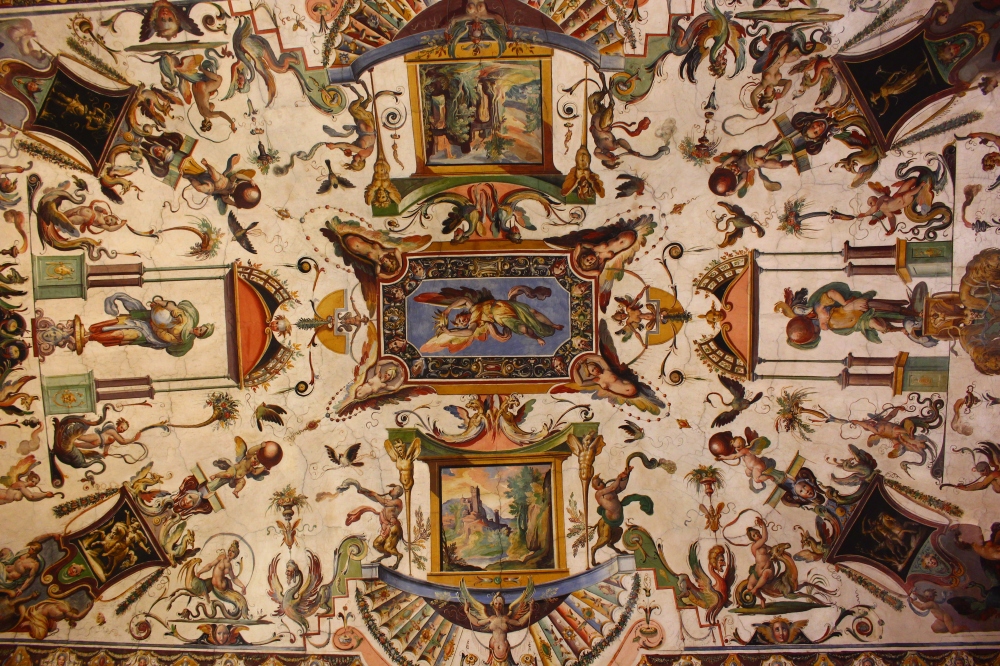 One of the ceiling frescoes.
One of the ceiling frescoes.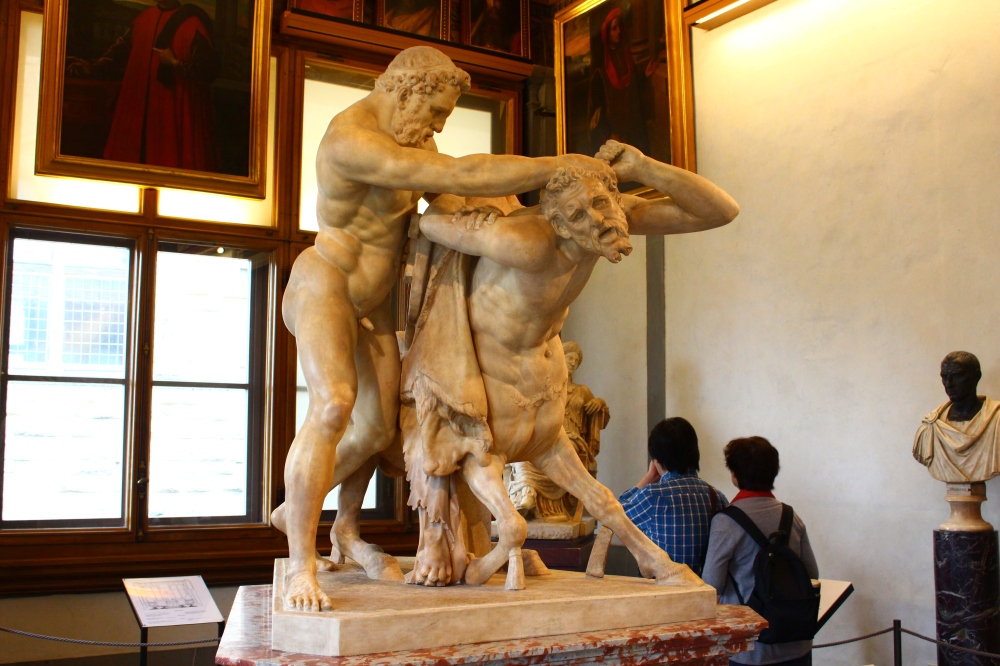
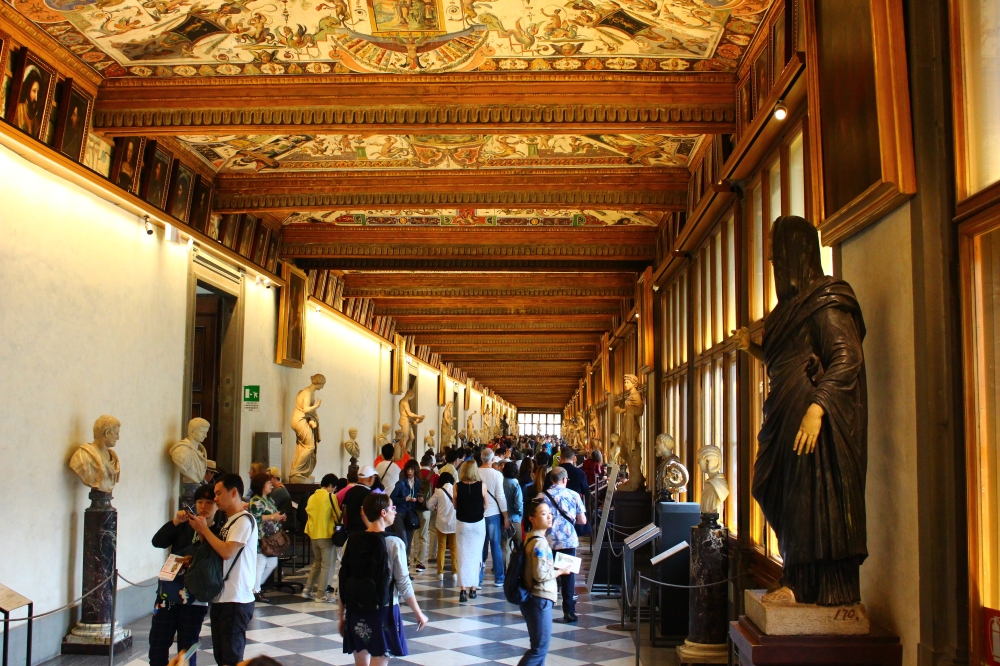
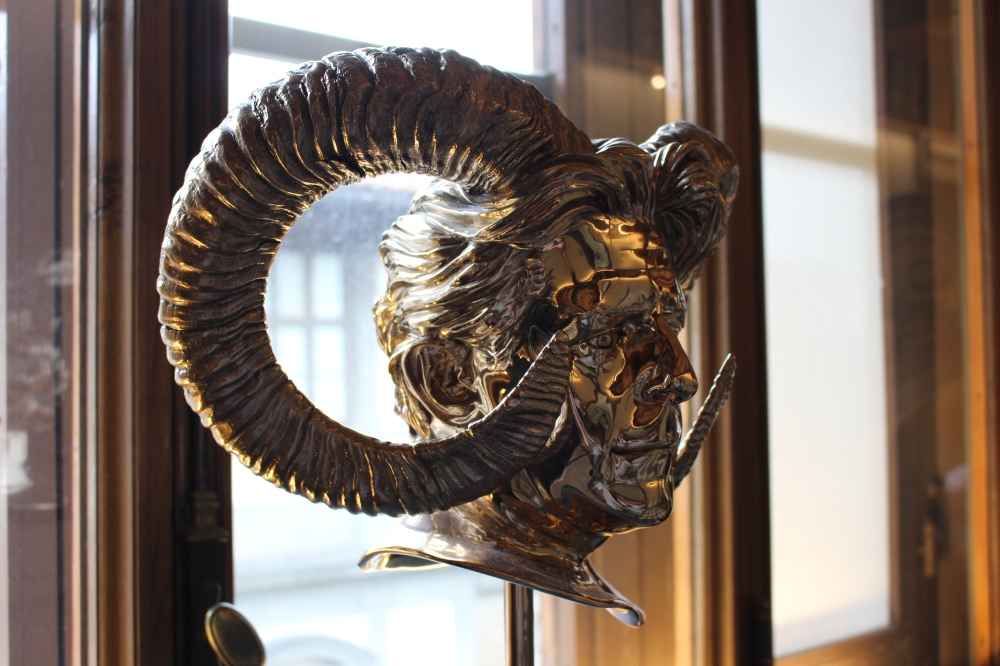

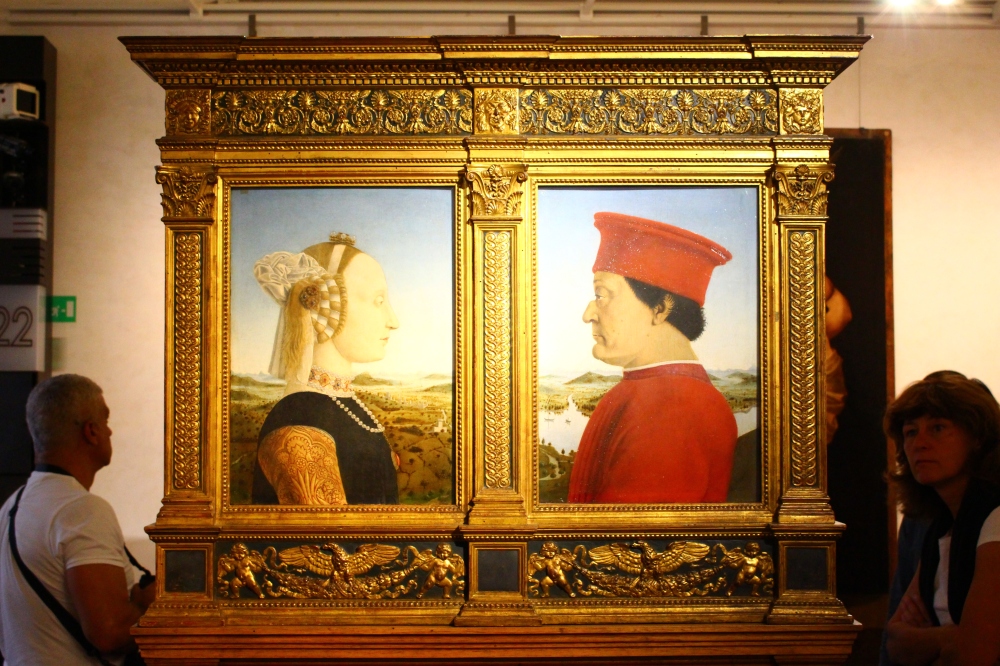


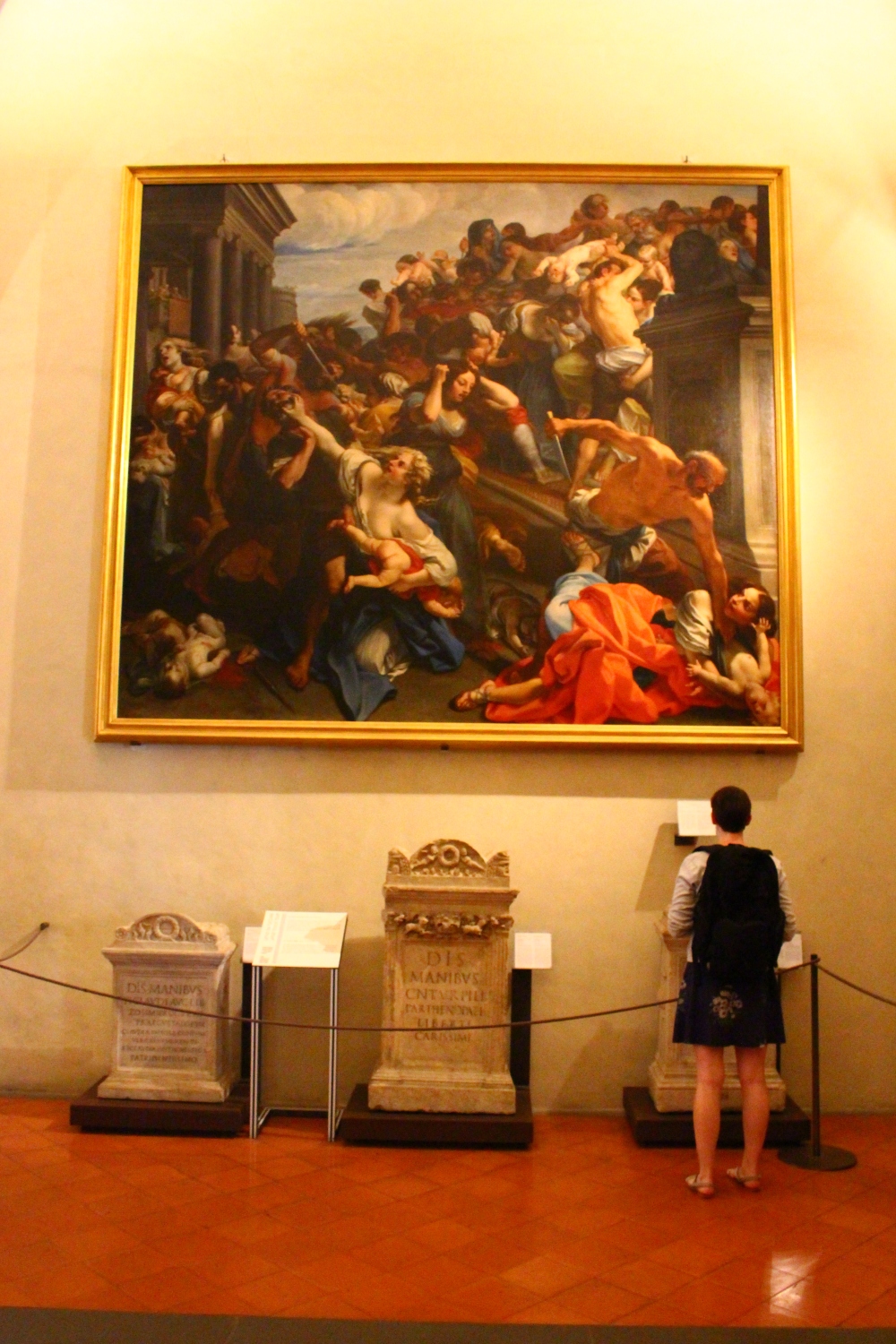
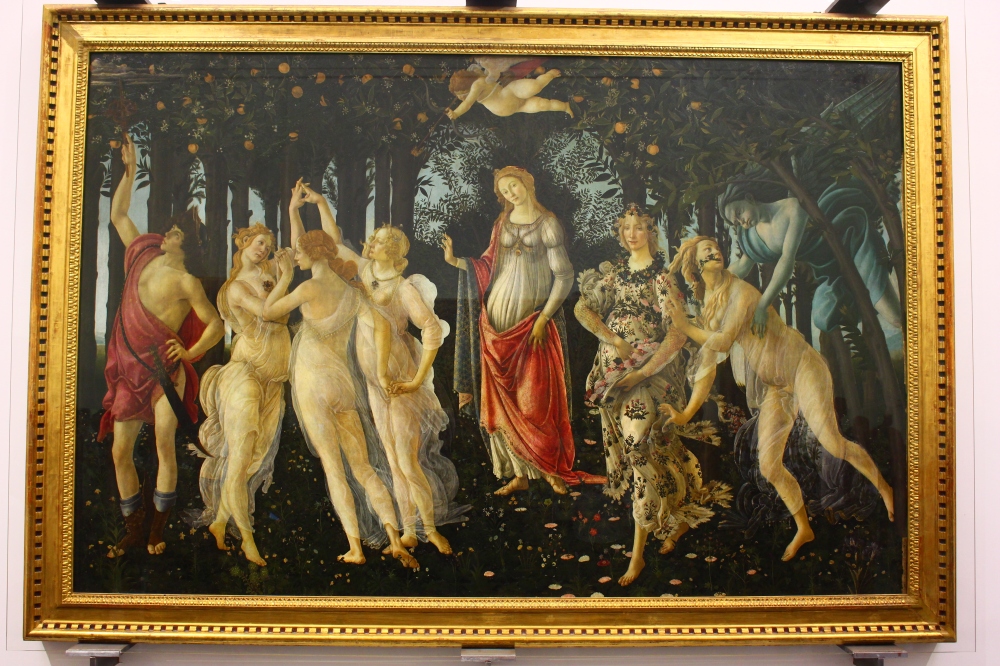


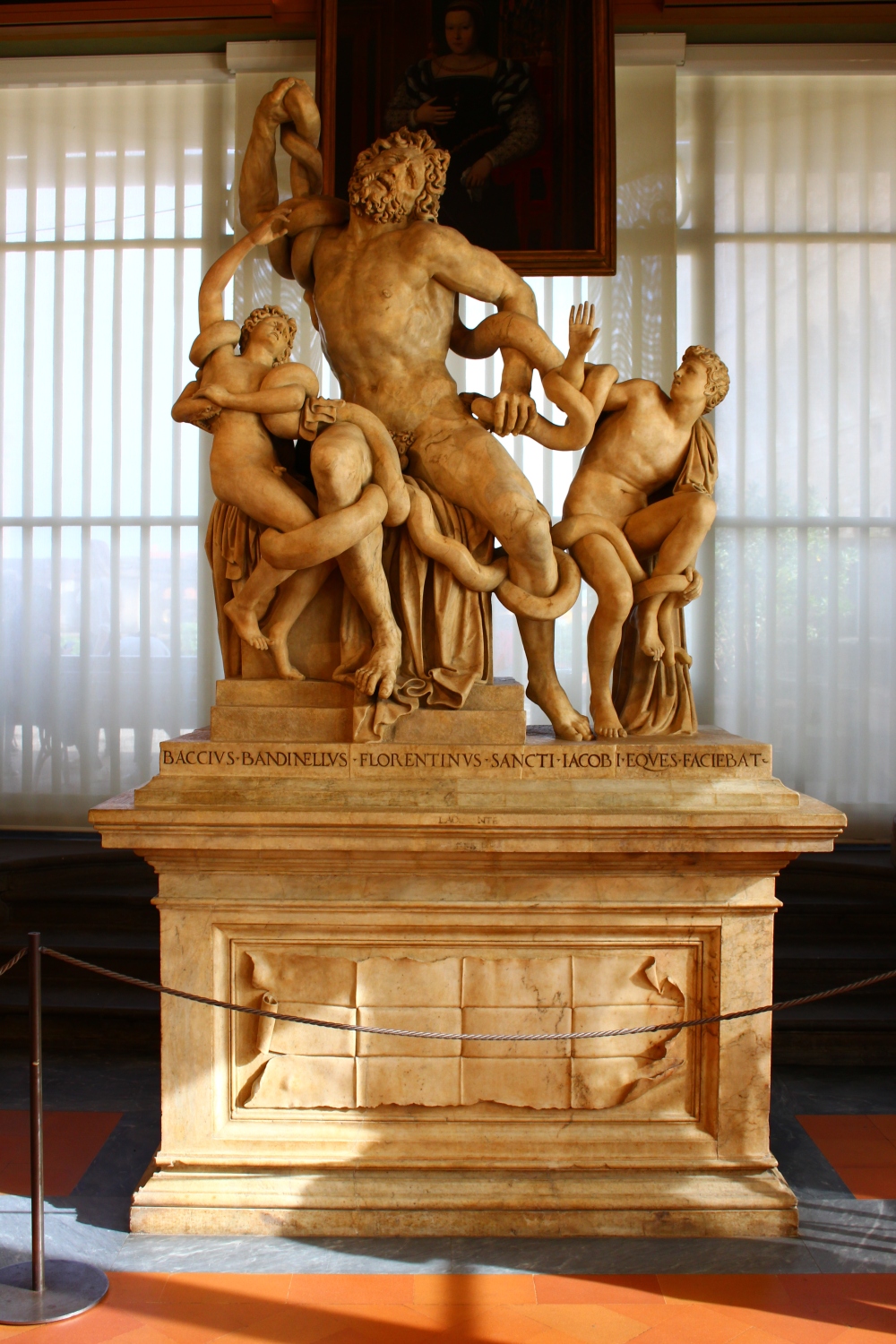
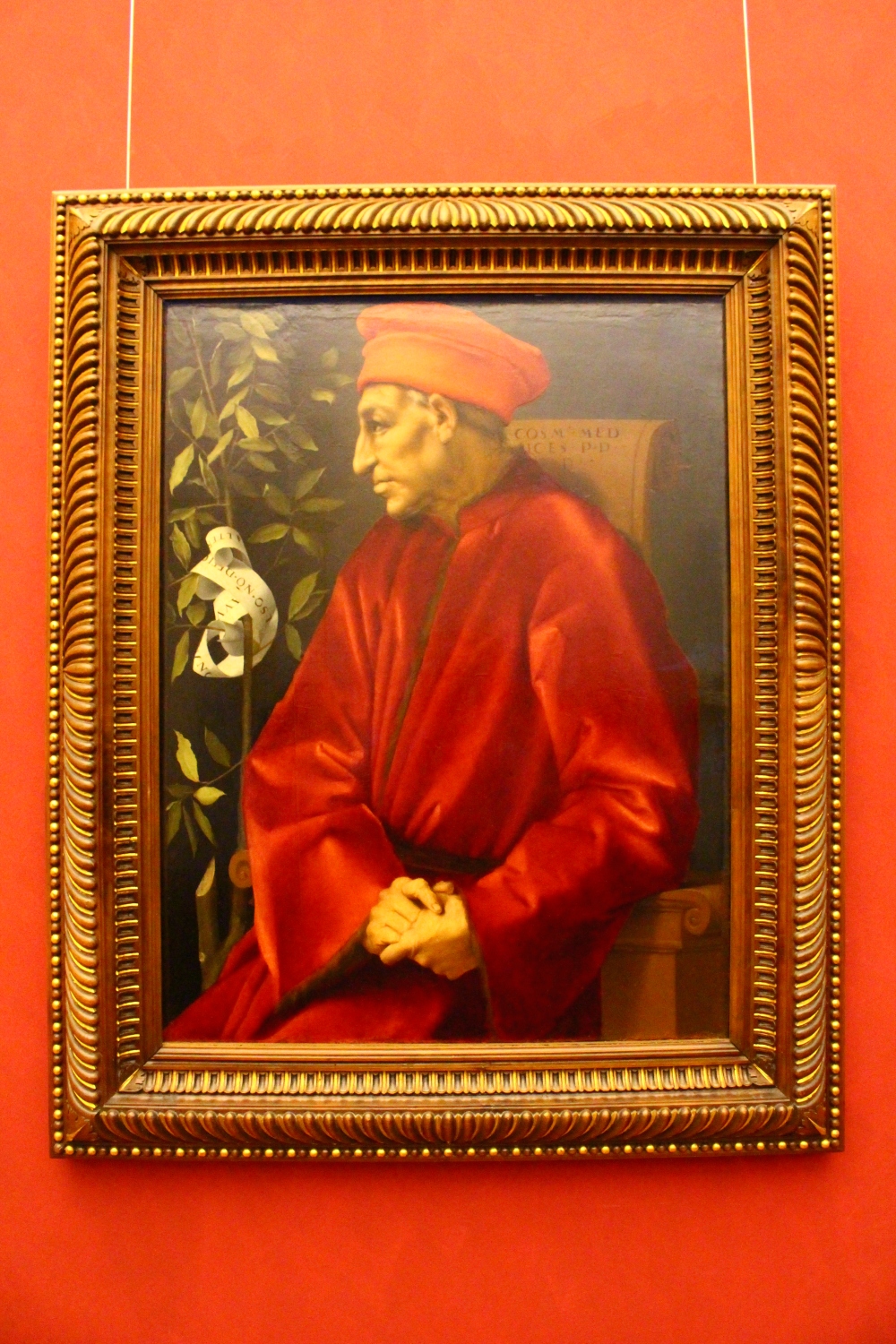
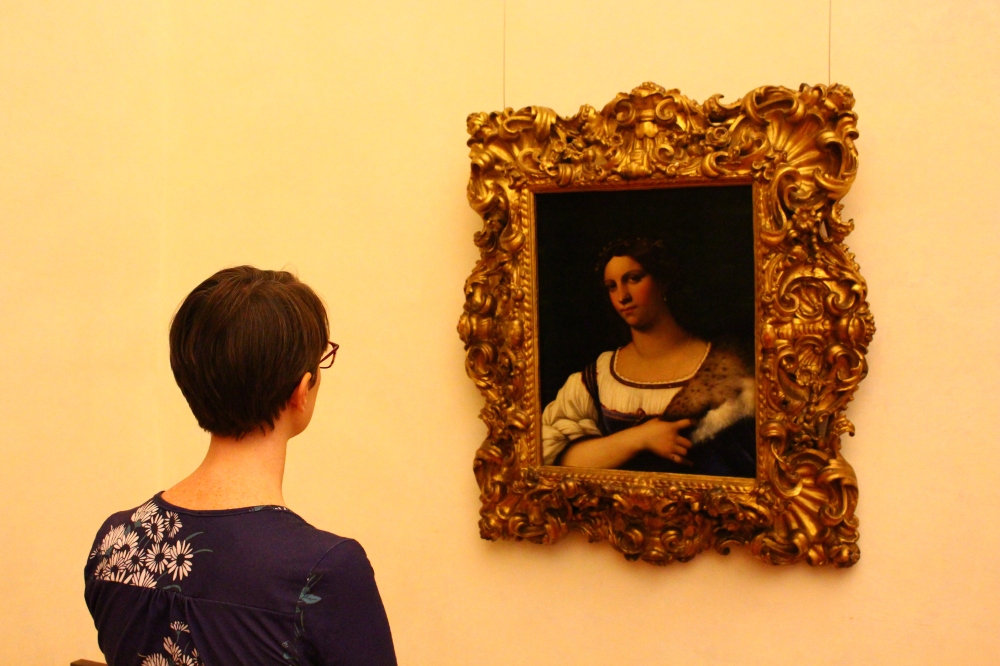
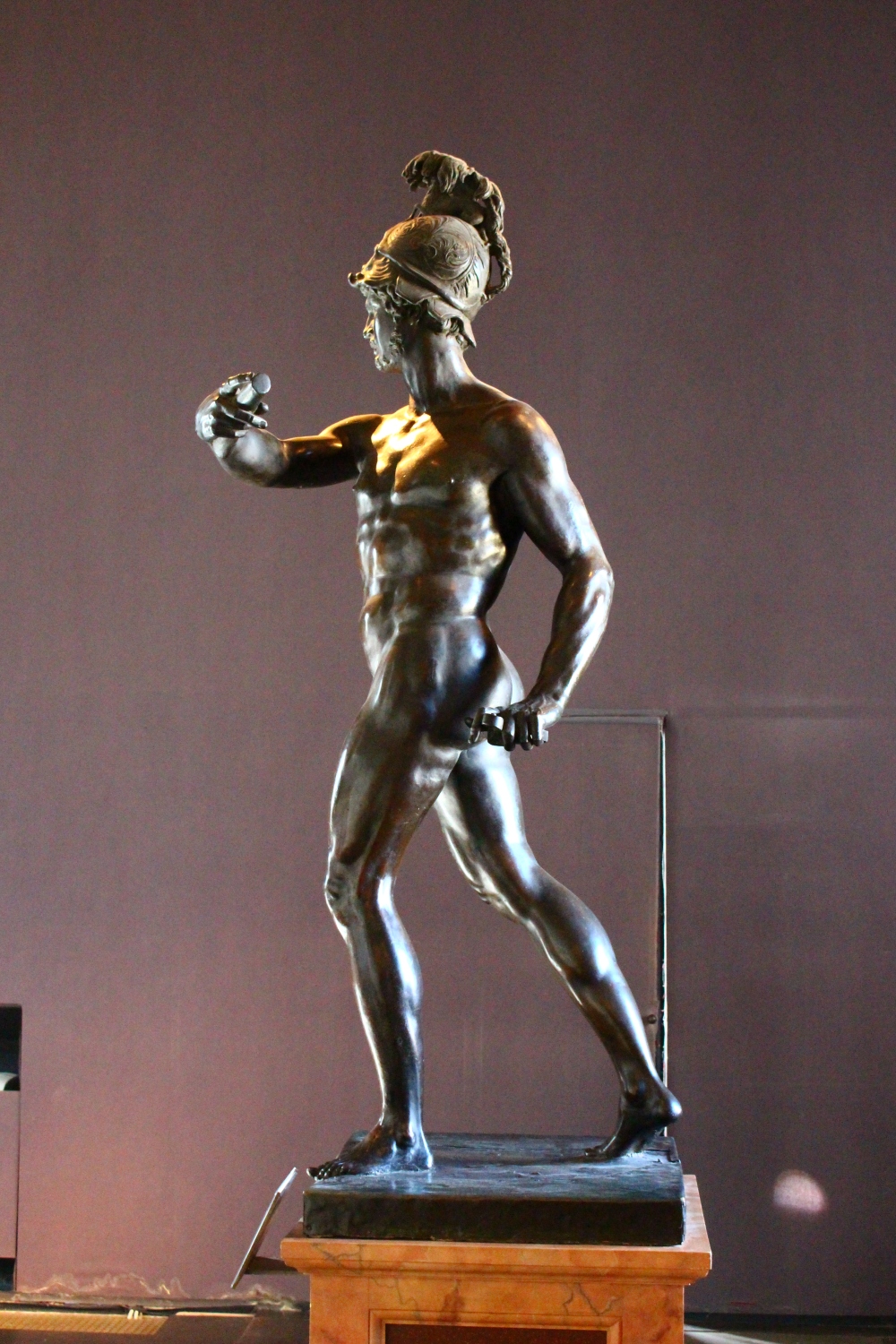

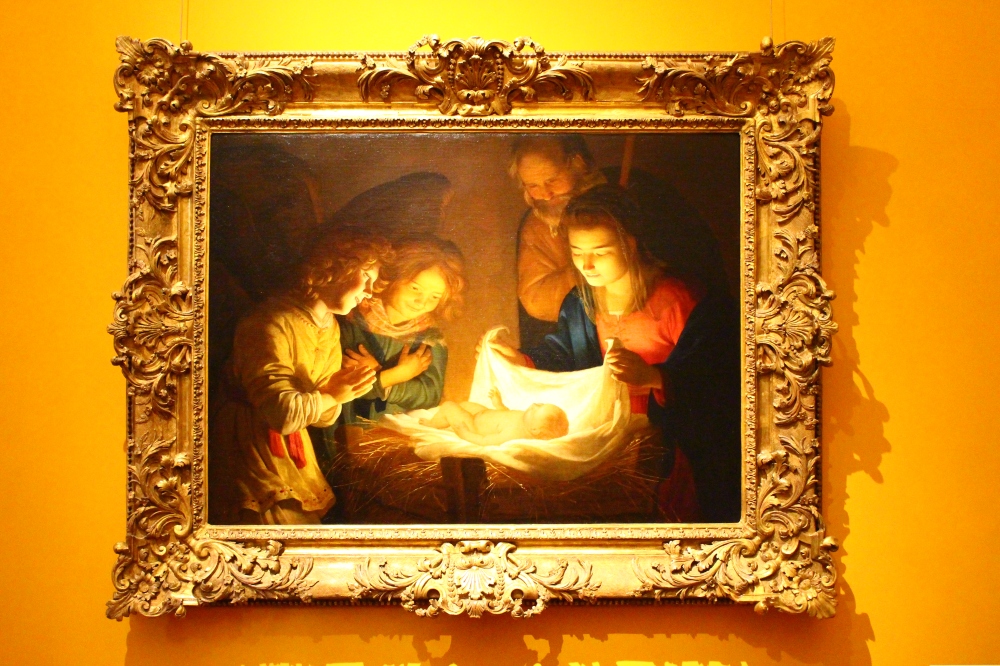
Piazza del Duomo
It is here that you come to see Florentine architecture at its most elaborate and detailed. Seeing the buildings in photos and books do nothing for their real life majesty. They’re stunningly beautiful. I think the Renaissance period attracts me so much because of the focus on detail. My personal aesthetic is attracted by simplicity and a pervading sense of calm, but it is the devotion to skill advancement in the Renaissance that I love. The Renaissance period embraced new and developing art forms, concerned with uncovering near-photographic painting methods, and miraculous feats of architectural evolution where light and ideas of heaven are central. And I love it so much.
This piazza is a sight to behold. It is dominated by the cathedral (Duomo Santa Maria del Fiore) which we couldn’t get into due to crowds, and also standing alongside it is the Campanile, a tall, narrow, lift-less tower with stunning views of the terracotta roofs and cobblestone streets of the city. At the Western end of the duomo is Battistero di San Giovanni (Baptistery of Saint John to you non-Italian speaking plebs), a small building where again, the ceilings are essential viewing. Waiting in the queue to enter these buildings is not such a chore because of the beauty of their exterior. As long as you have someone holding your place in the queue, you’re quite able to break out and wander and investigate the coloured marble patterns (white and a dark green – similar to the colour of pounamu / greenstone and which appears almost black in photos).
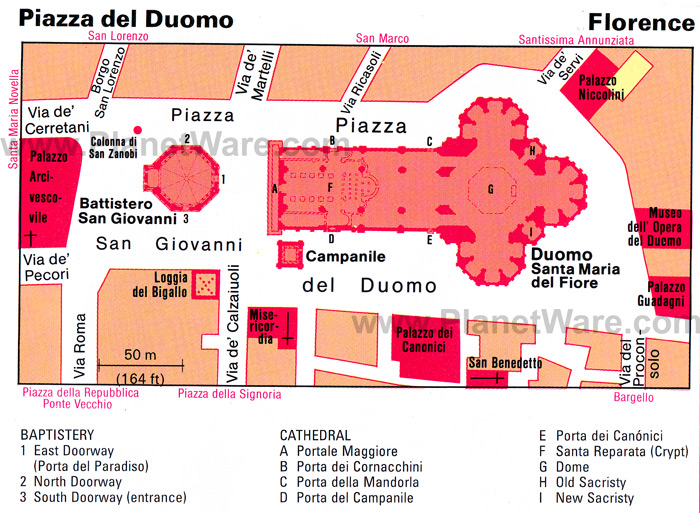
 The cathedral’s great dome viewed from the Campanile.
The cathedral’s great dome viewed from the Campanile.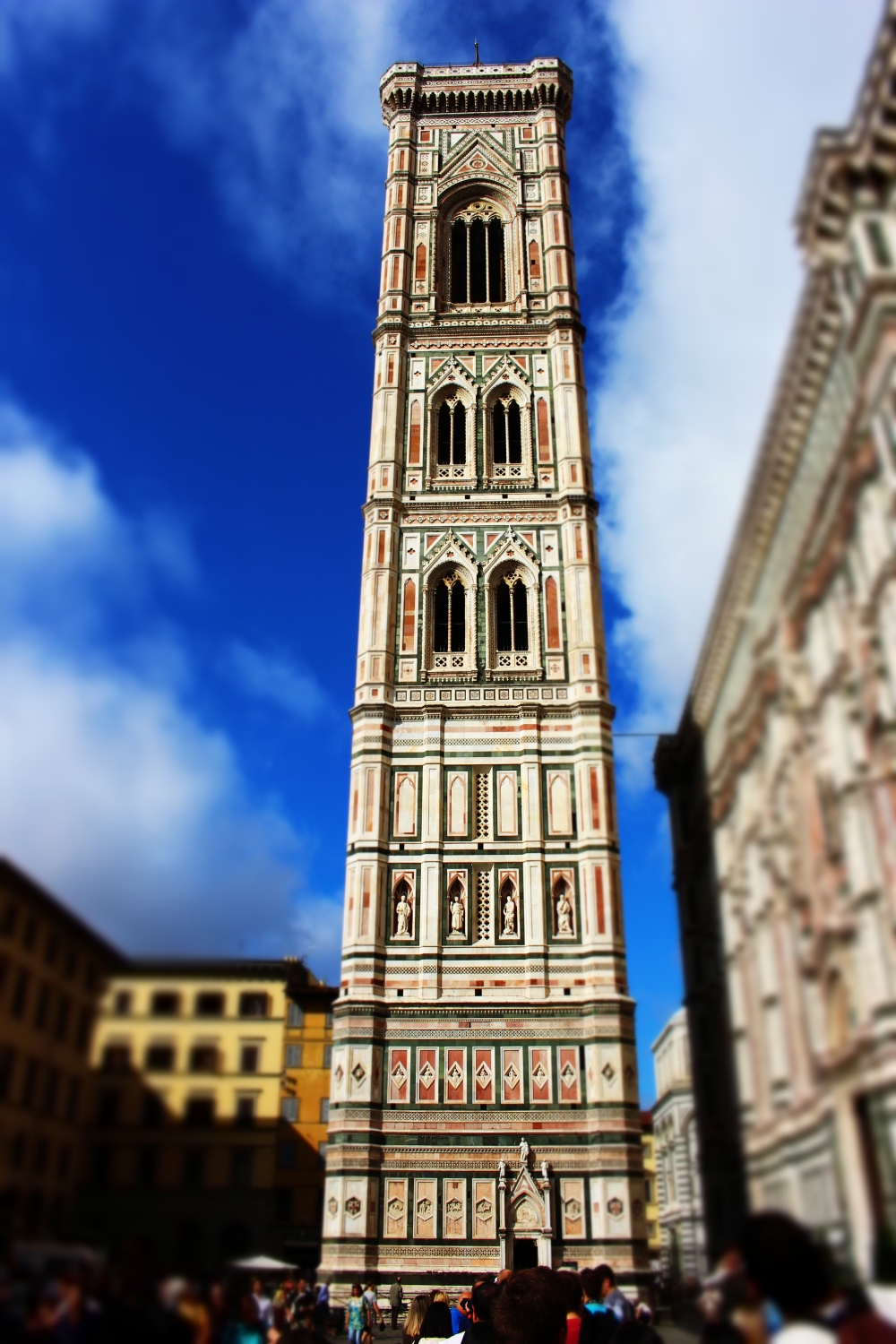 Campanile
Campanile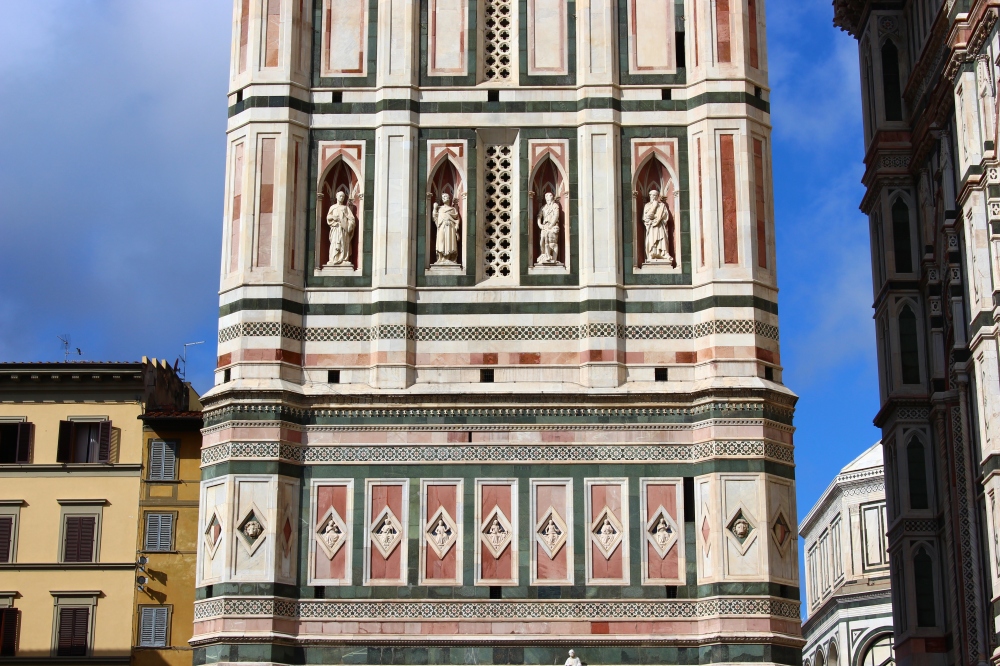
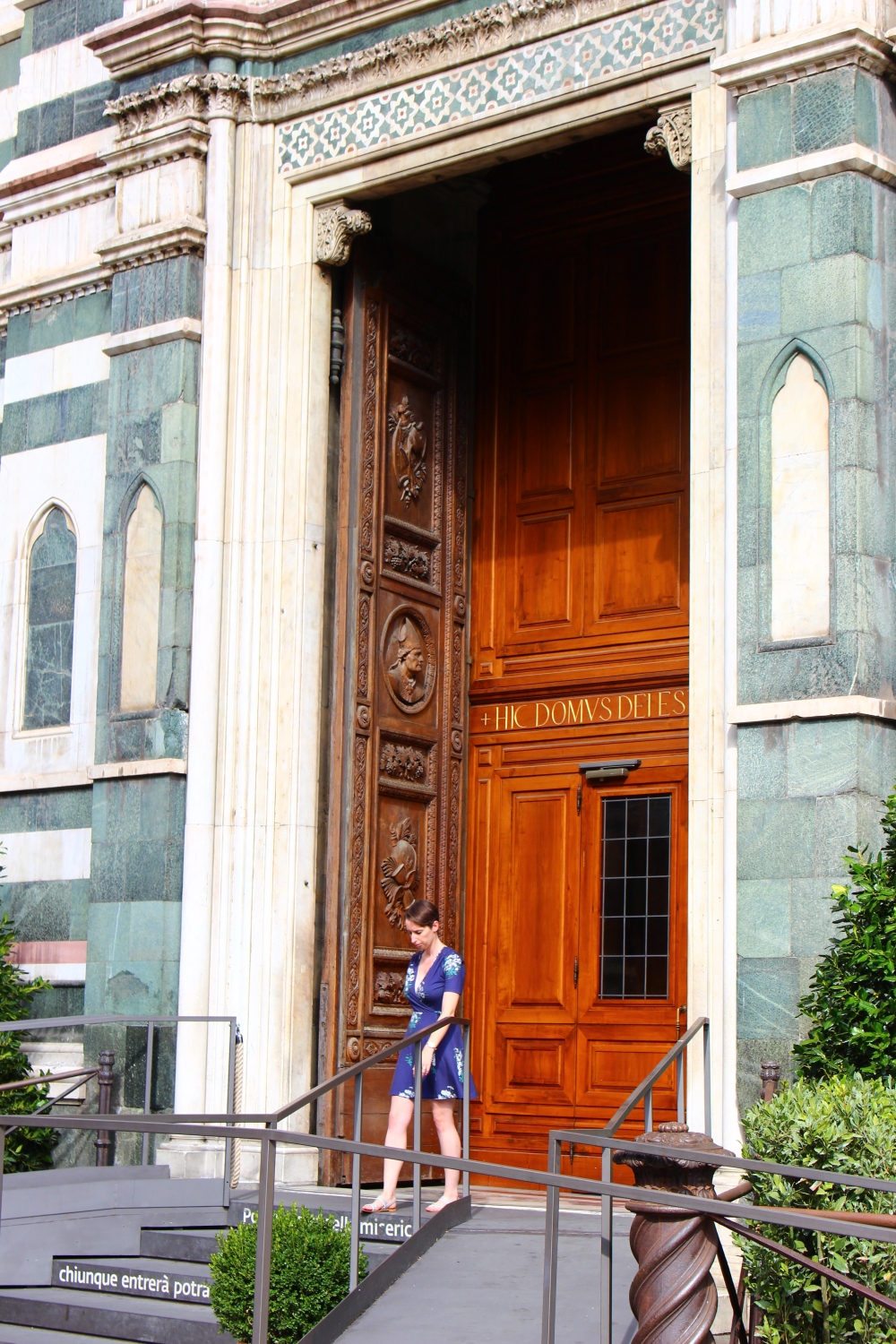 Checking out some doors – I got snapped.
Checking out some doors – I got snapped.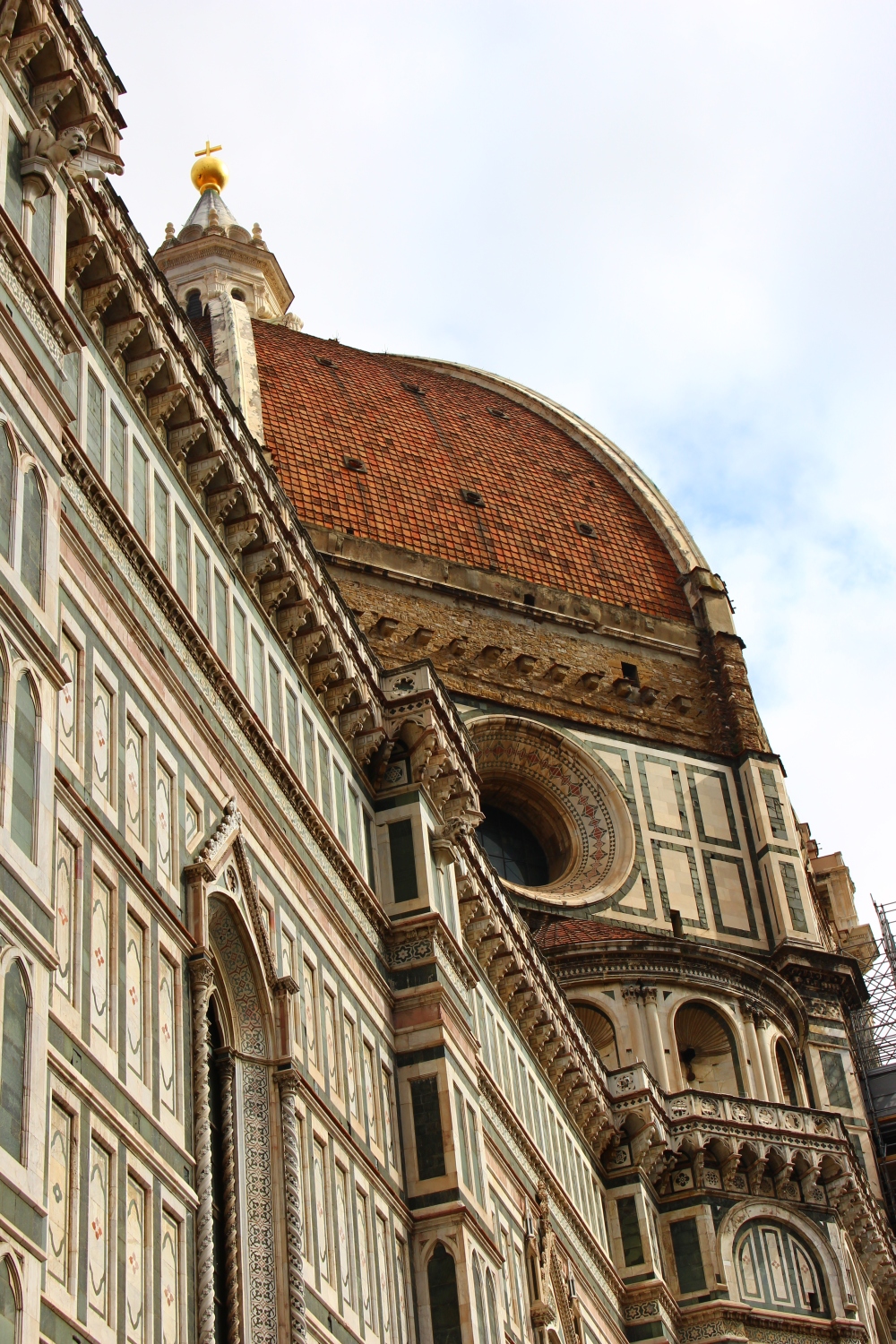


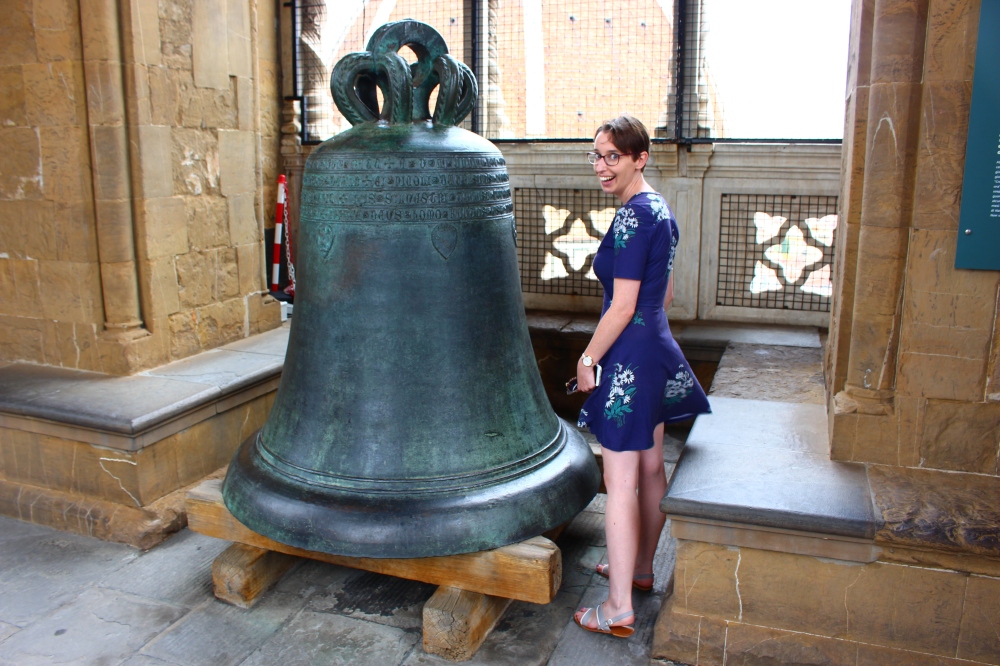
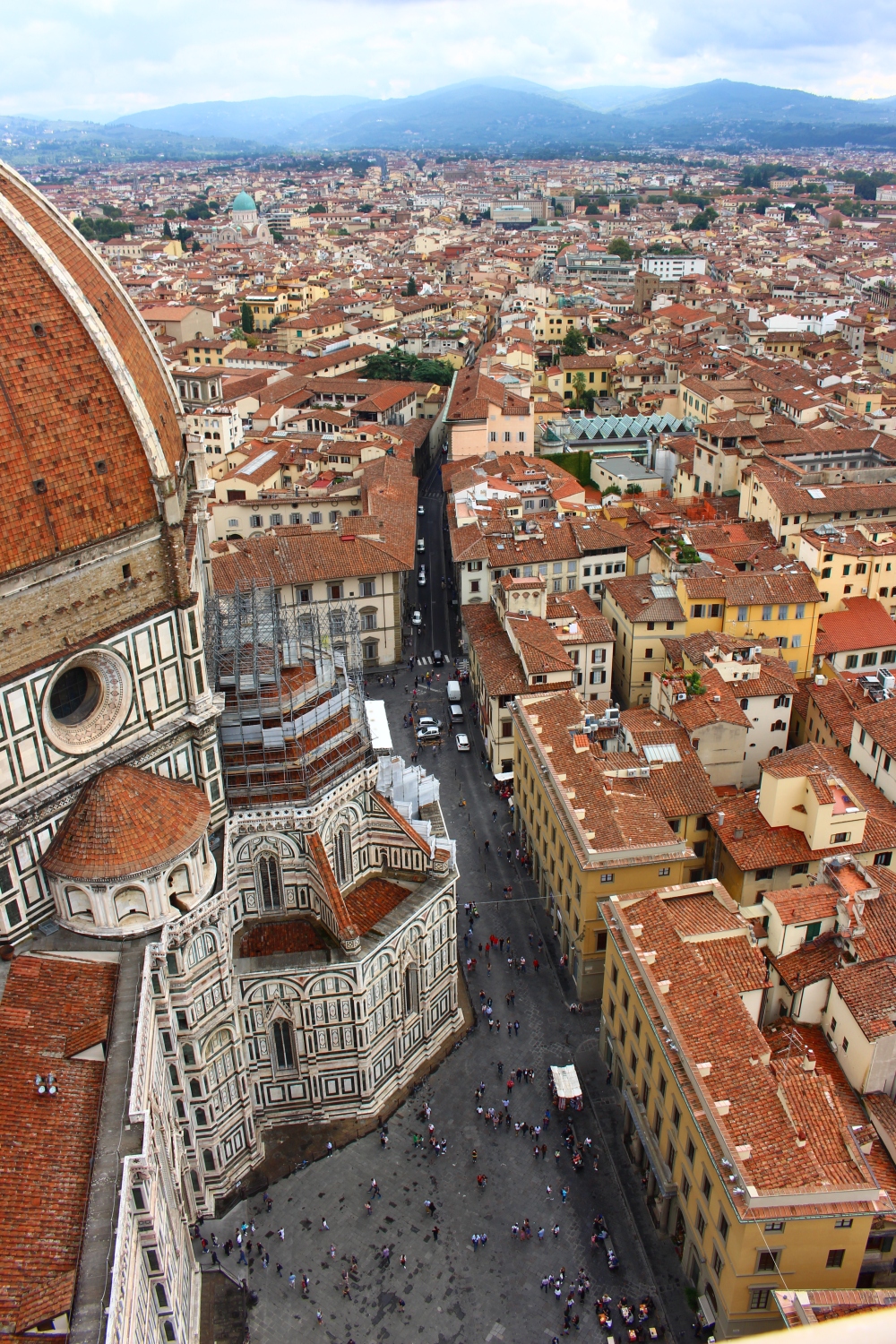
Let’s not fluff about here. It’s time to get into some nitty gritty. Some would say that doors are doors and not worth getting worked up about. Some would say such foolish things, but you and I wouldn’t because we are quite aware that some doors are not just doors. Some doors are the Gates to Paradise and they are exceptional examples of man’s devotion to practicing his skill and seeking an opportunity to thank God for being blessed with such skill (or at the very least to win a competition and show off a bit).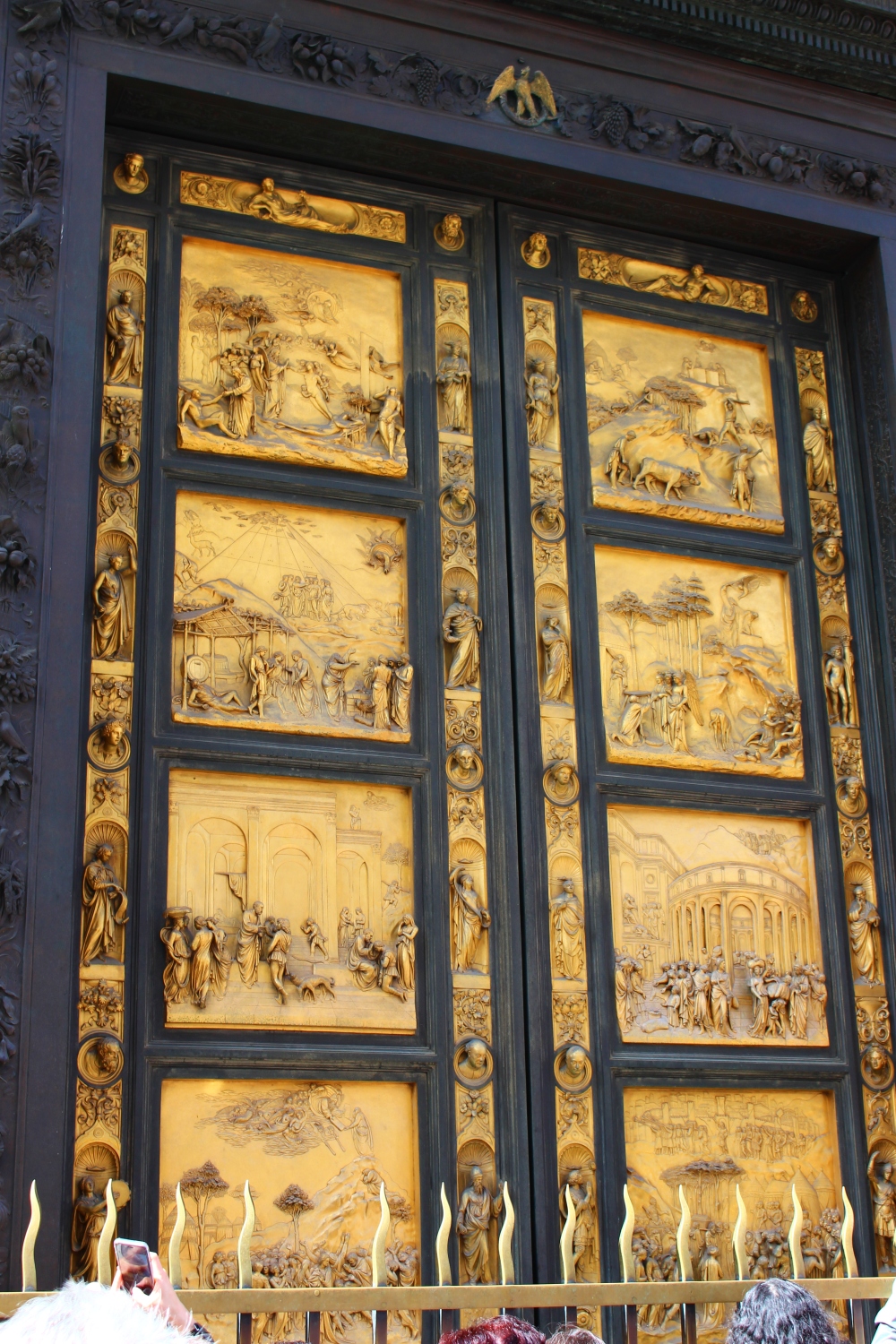

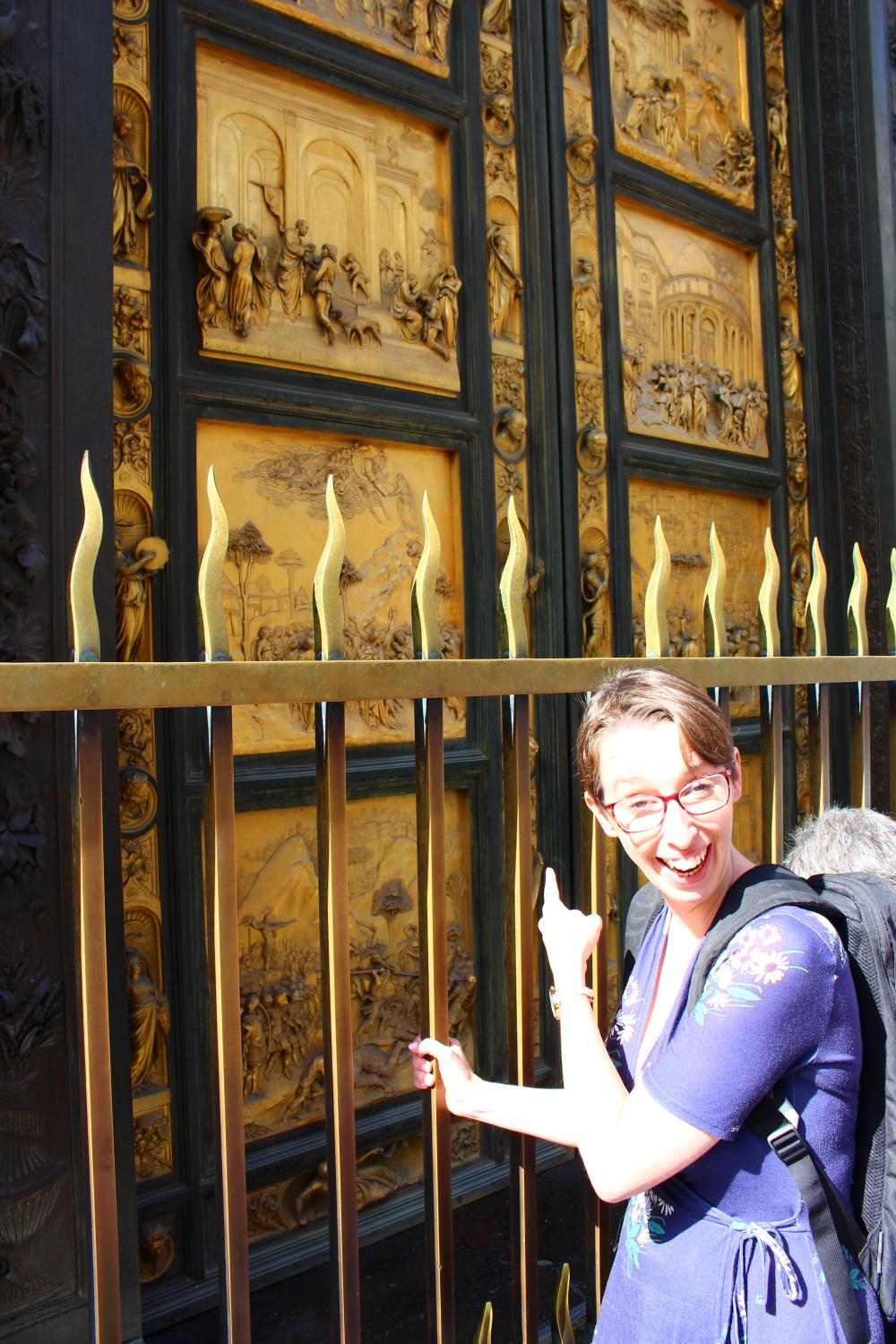
The original plan was for the doors to depict scenes from the Old Testament, and the trial piece was the sacrifice of Isaac, which survives. However, the plan was changed to depict scenes from the New Testament, instead.
To carry out this commission, [Ghiberti] set up a large workshop in which many artists trained, including Donatello, Masolino, Michelozzo, Uccello, and Antonio Pollaiuolo. When his first set of twenty-eight panels was complete, Ghiberti was commissioned to produce a second set for another doorway in the church, this time with scenes from the Old Testament, as originally intended for his first set. Instead of twenty-eight scenes, he produced ten rectangular scenes in a completely different style. They were more naturalistic, with perspective and a greater idealization of the subject. Michelangelo dubbed these scenes the “Gates of Paradise.” “The Gates of Paradise” is a major monument of the age of Renaissance humanism.
https://en.wikipedia.org/wiki/Lorenzo_Ghiberti#Florence_Baptistery_doors
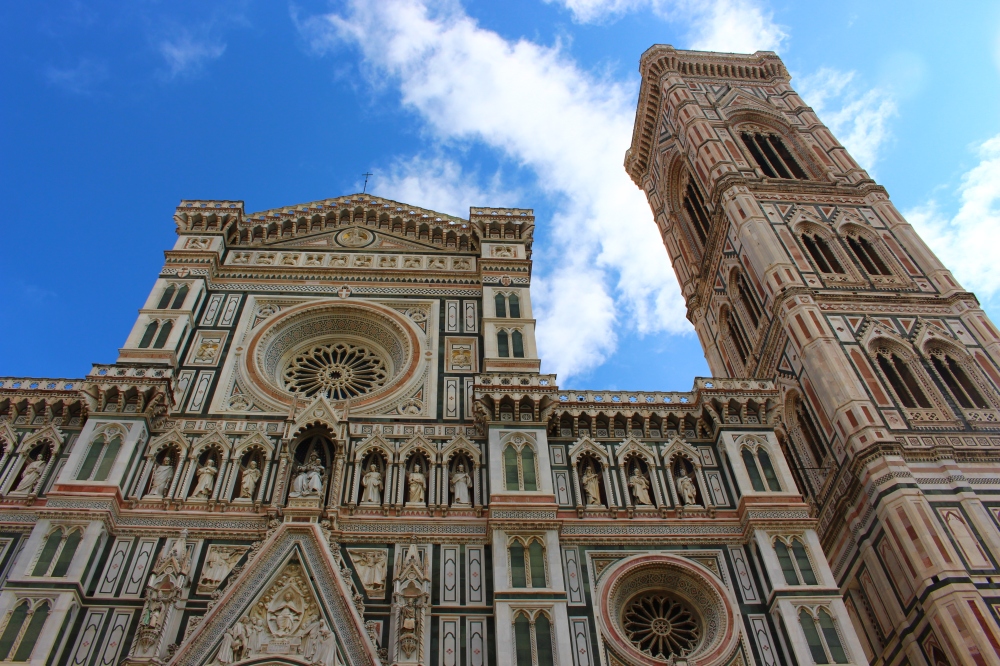
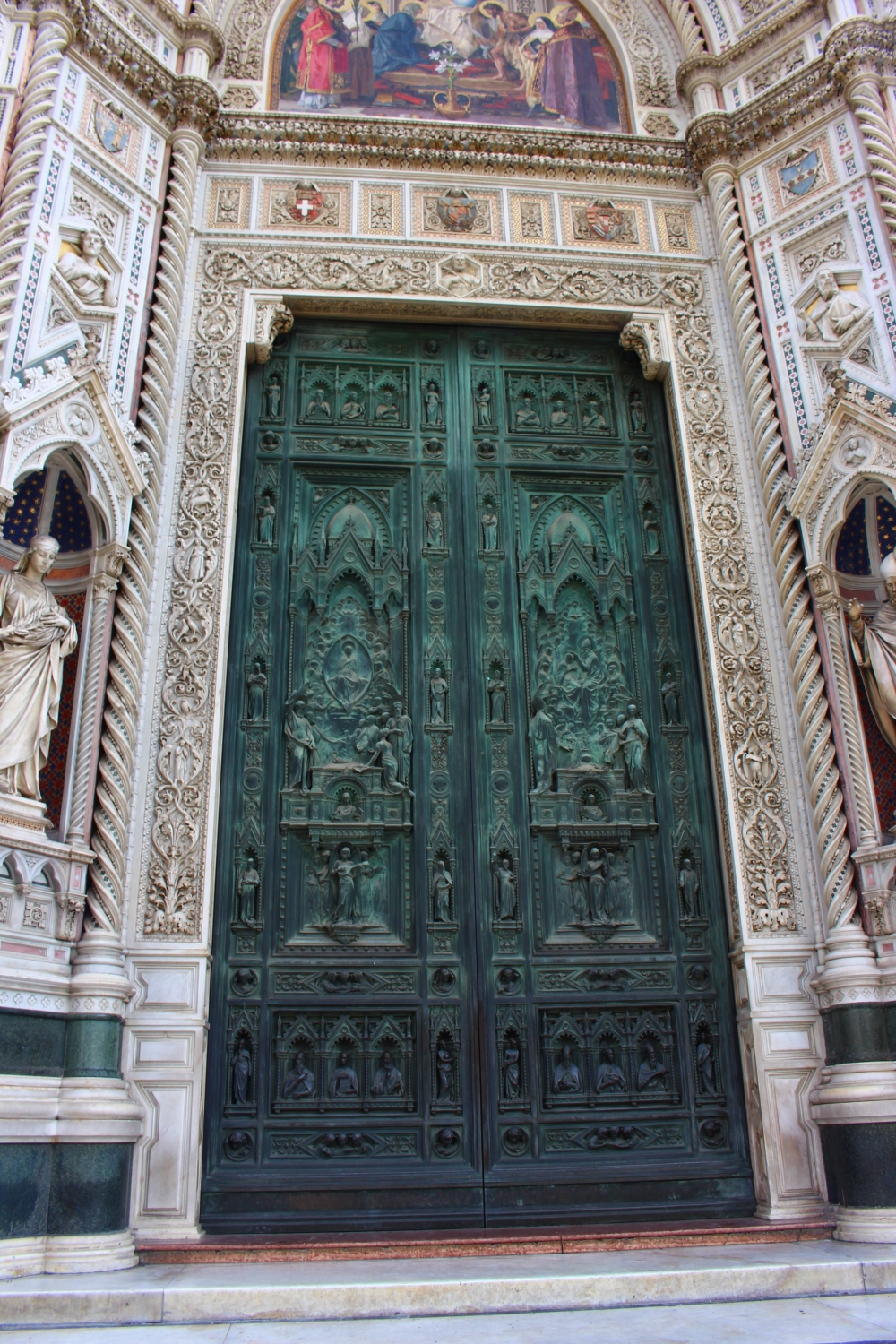
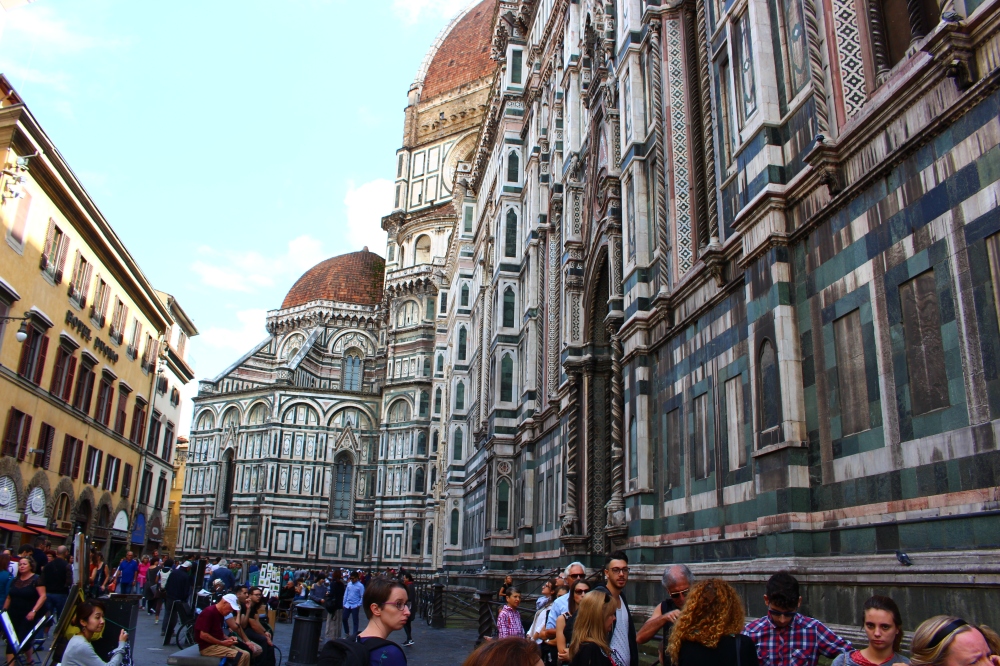
 Baptistery ceiling
Baptistery ceiling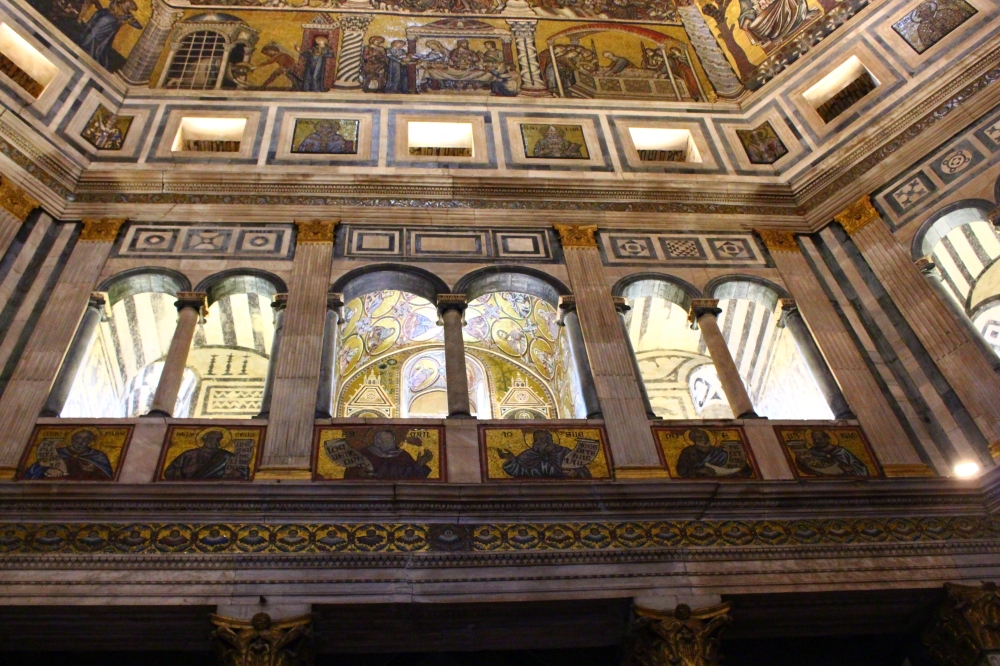
Gallaria dell’Accademia
You come here for David. He’s large, he’s naked, he has a little winky, he is beautiful. One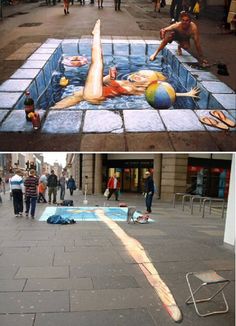 thing that I found interesting was the intelligence of the Renaissance artist. Being aware that his works would be viewed from below, and in a time where perspective was being experimented with and your skills as an artist were measured by your ability to realistically portray it, the artists developed an understanding that mathematics was central to showing works as accurate 3D representations. Linear perspective was vital to Brunelleschi’s successes and Michelangelo became aware of its import with his sculptures also. What this meant was that his massive sculptures, viewed from below, appear proportionate and correct. But if you viewed from eye-level they would appear oddly disfigured, forms looking like they have diseases of gigantism perhaps similar the Elephant Man (look closely at the disproportionate size of David’s hands, for example). Consider what it takes to construct those sidewalk chalk illusions: how from one view you could fall into them and from the other they just look odd. The Statue of David was initially meant to sit atop Santa Maria del Fiore but the monolithic construction weighed over 6 tonnes. It was not going to ever make it to the top of a building. Instead it sat in the Piazza della Signora for around 800 years until it was brought in from the weather and displayed in its current setting. So now you know!
thing that I found interesting was the intelligence of the Renaissance artist. Being aware that his works would be viewed from below, and in a time where perspective was being experimented with and your skills as an artist were measured by your ability to realistically portray it, the artists developed an understanding that mathematics was central to showing works as accurate 3D representations. Linear perspective was vital to Brunelleschi’s successes and Michelangelo became aware of its import with his sculptures also. What this meant was that his massive sculptures, viewed from below, appear proportionate and correct. But if you viewed from eye-level they would appear oddly disfigured, forms looking like they have diseases of gigantism perhaps similar the Elephant Man (look closely at the disproportionate size of David’s hands, for example). Consider what it takes to construct those sidewalk chalk illusions: how from one view you could fall into them and from the other they just look odd. The Statue of David was initially meant to sit atop Santa Maria del Fiore but the monolithic construction weighed over 6 tonnes. It was not going to ever make it to the top of a building. Instead it sat in the Piazza della Signora for around 800 years until it was brought in from the weather and displayed in its current setting. So now you know!
The Galleria dell’Accademia is not the major draw-card as the Uffizi is, but it is a great place to explore Renaissance sculpture, even if you’re just viewing halls filled with plaster replicas. And hey, when you get in on the free Sunday, it’s most certainly worth it. Also, very small, fast moving queues.



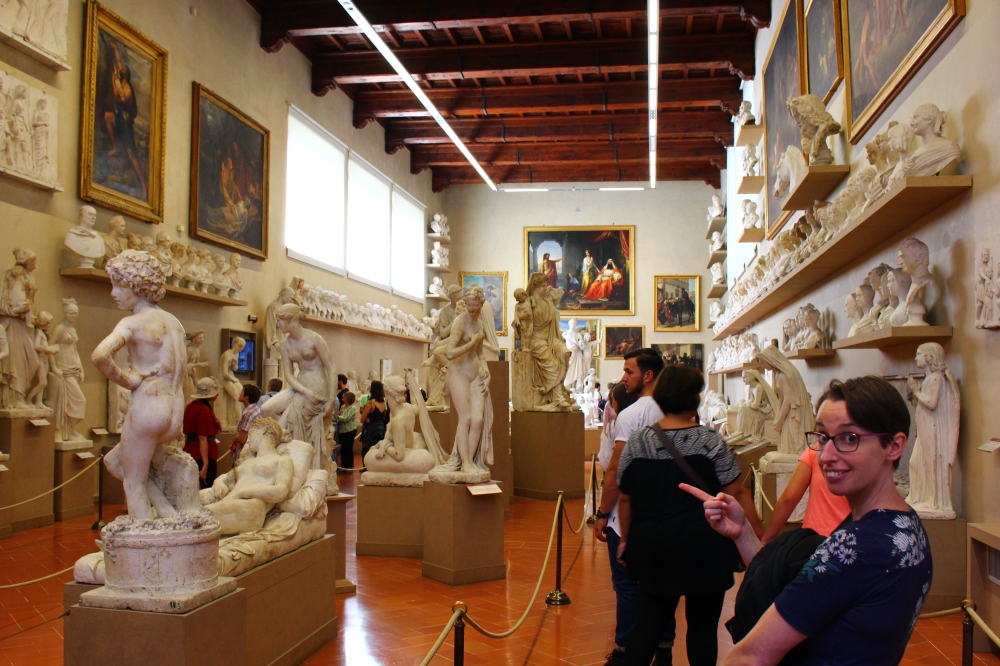
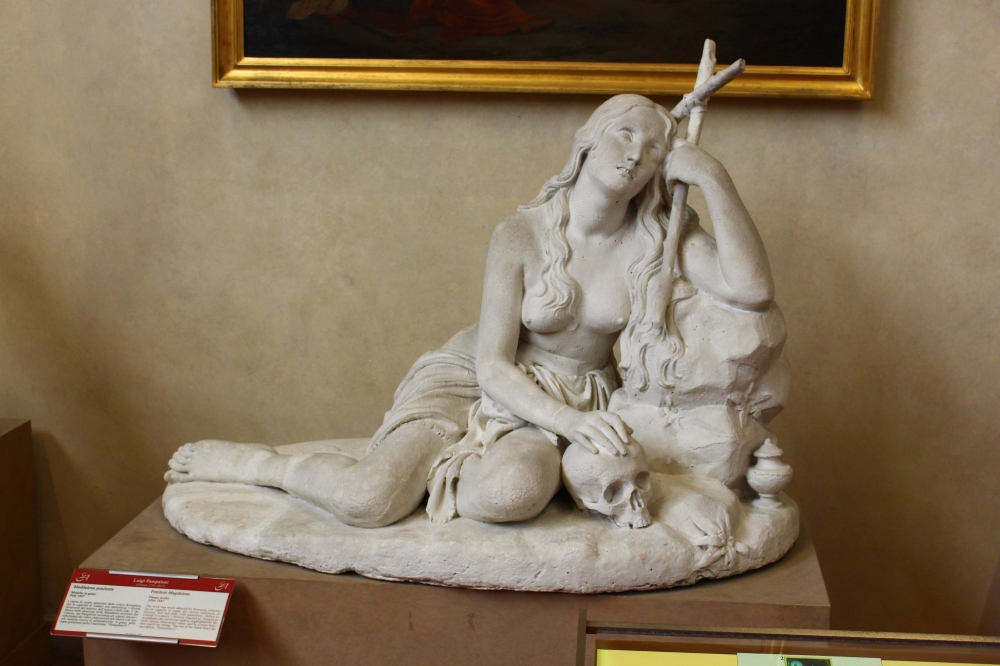
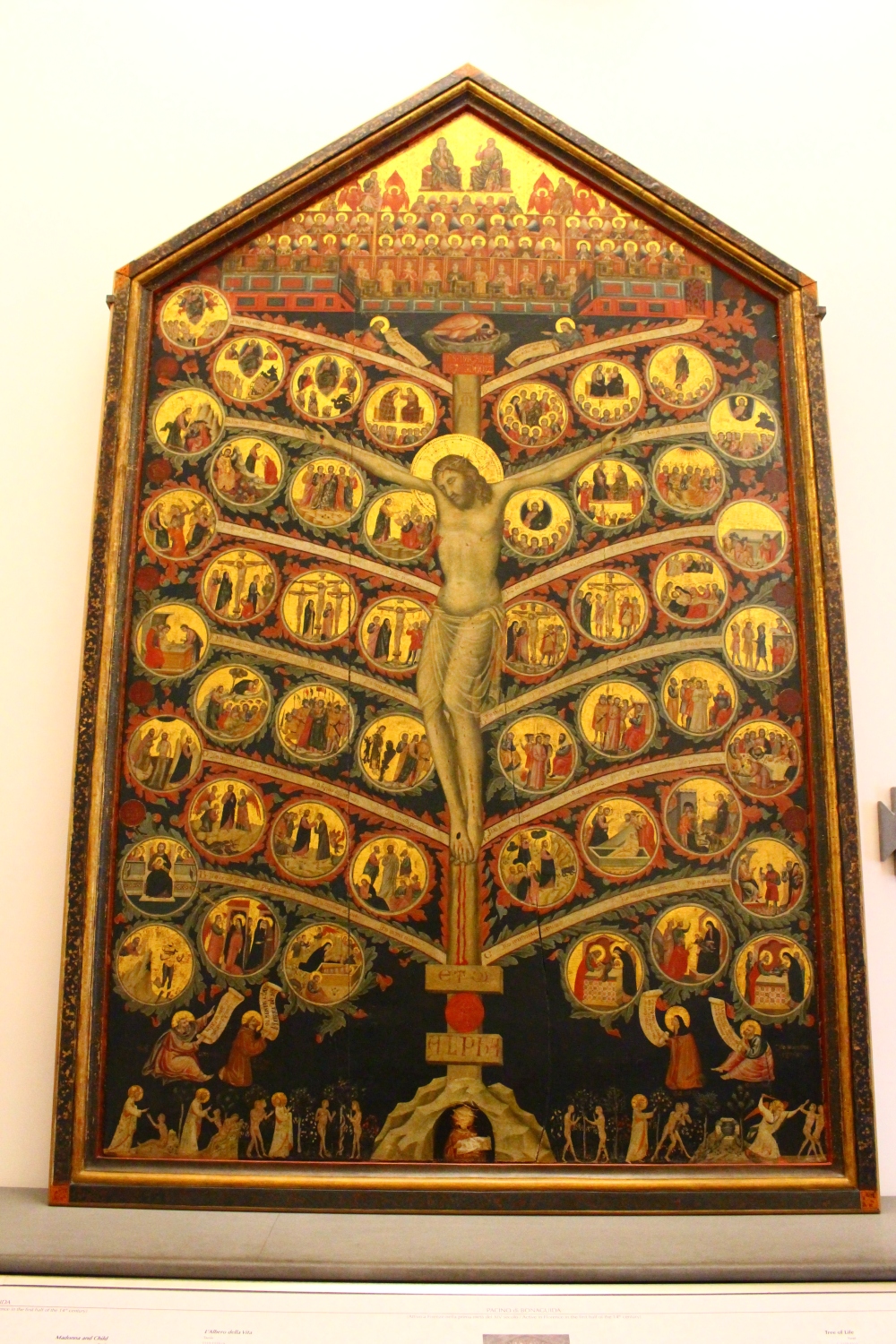
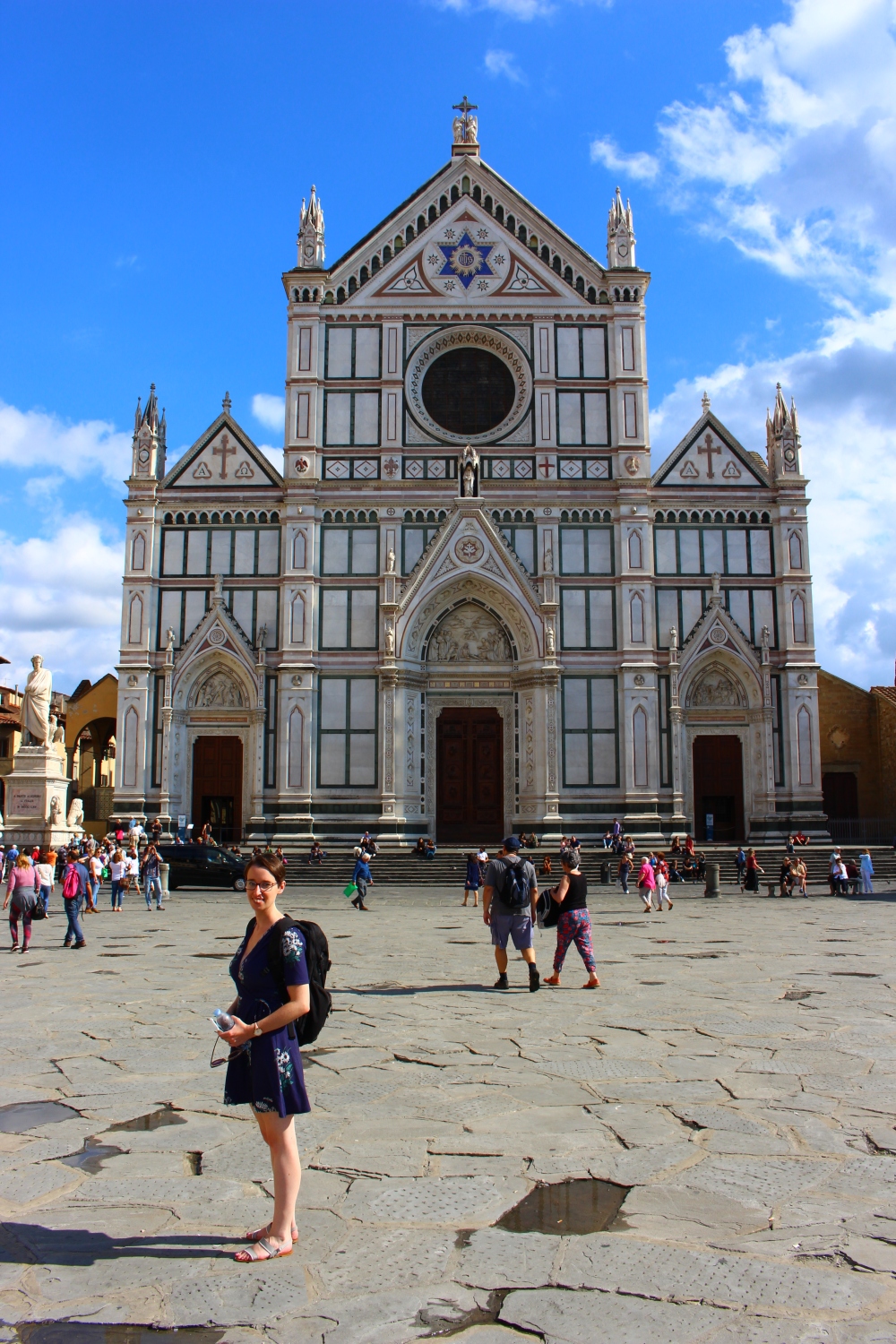 Santa Croce, Florence’s largest Franciscan church. Thank goodness GM was wearing long shorts and I had a cardigan to cover up my boozies otherwise the strict dress code would have stopped us getting in to the church.
Santa Croce, Florence’s largest Franciscan church. Thank goodness GM was wearing long shorts and I had a cardigan to cover up my boozies otherwise the strict dress code would have stopped us getting in to the church.
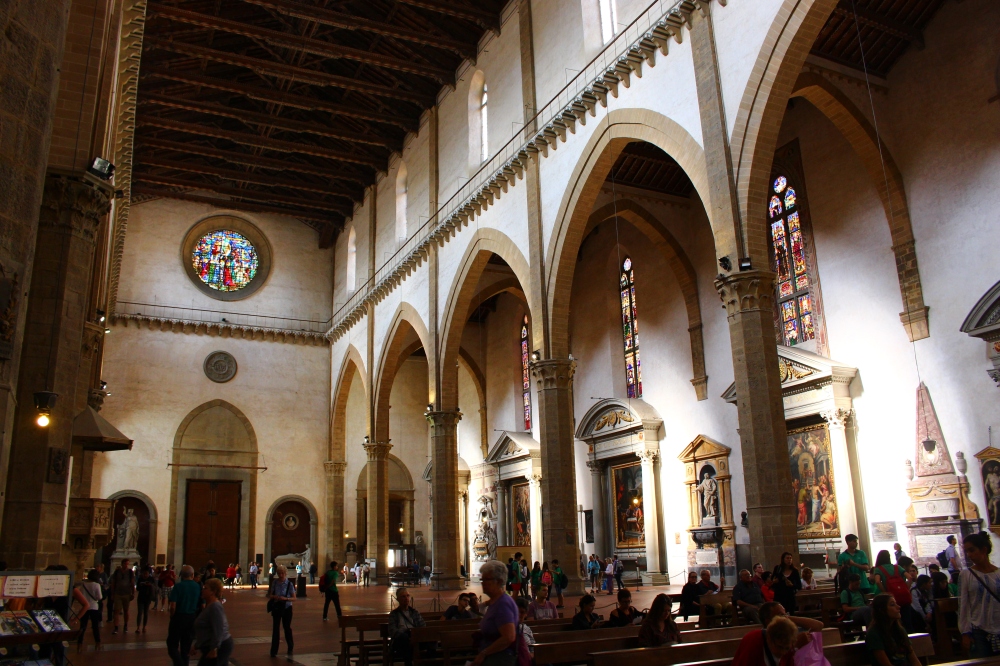
 The tombs roped off were so travelled over you can barely see any of the detail anymore, and with marble rubbed so smooth it becomes a bit of a hazard.
The tombs roped off were so travelled over you can barely see any of the detail anymore, and with marble rubbed so smooth it becomes a bit of a hazard.

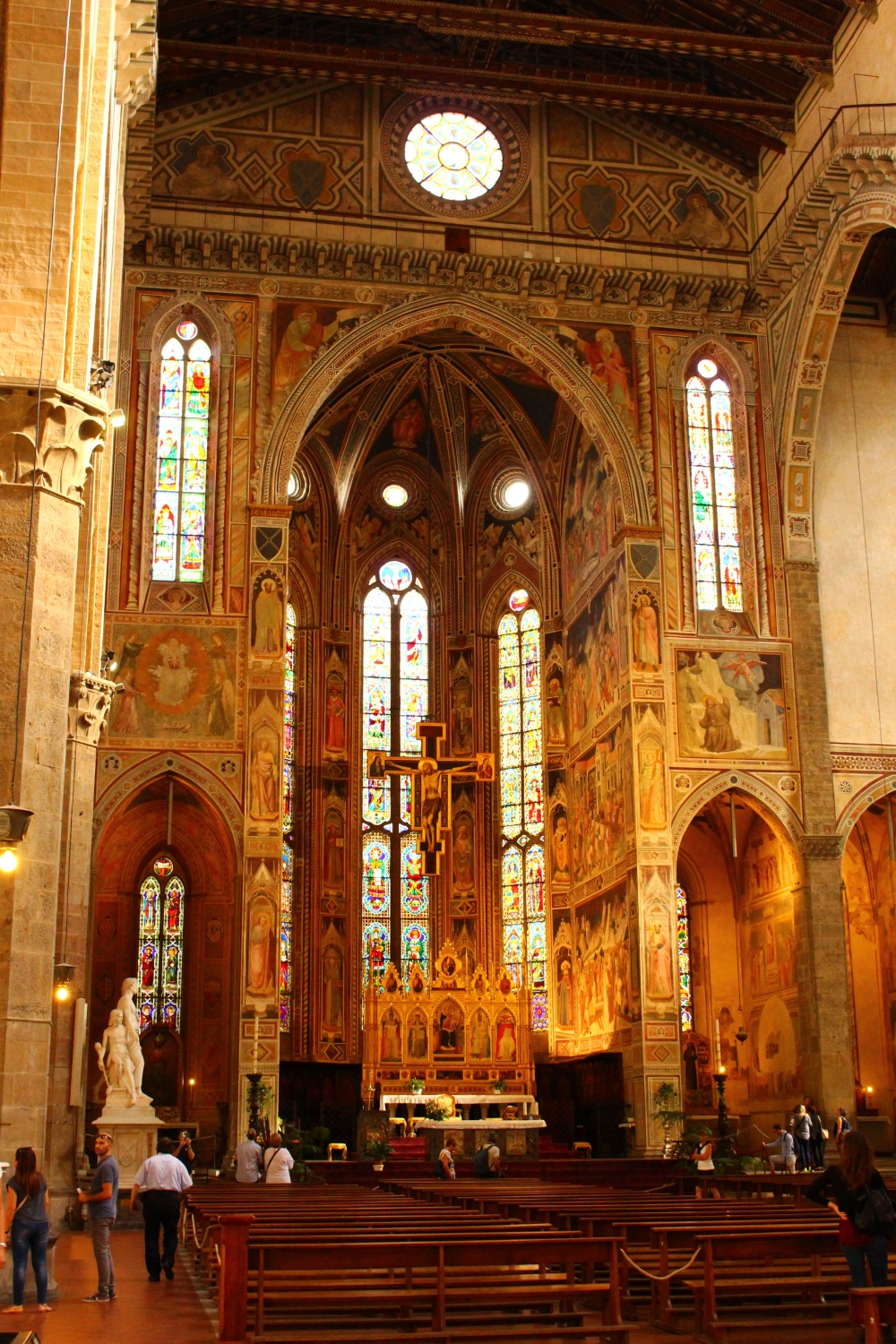
 Santa Croce is the resting place of some of the most famous Italians of its past; Michelangelo, Galileo and Machiavelli to name a few.
Santa Croce is the resting place of some of the most famous Italians of its past; Michelangelo, Galileo and Machiavelli to name a few.
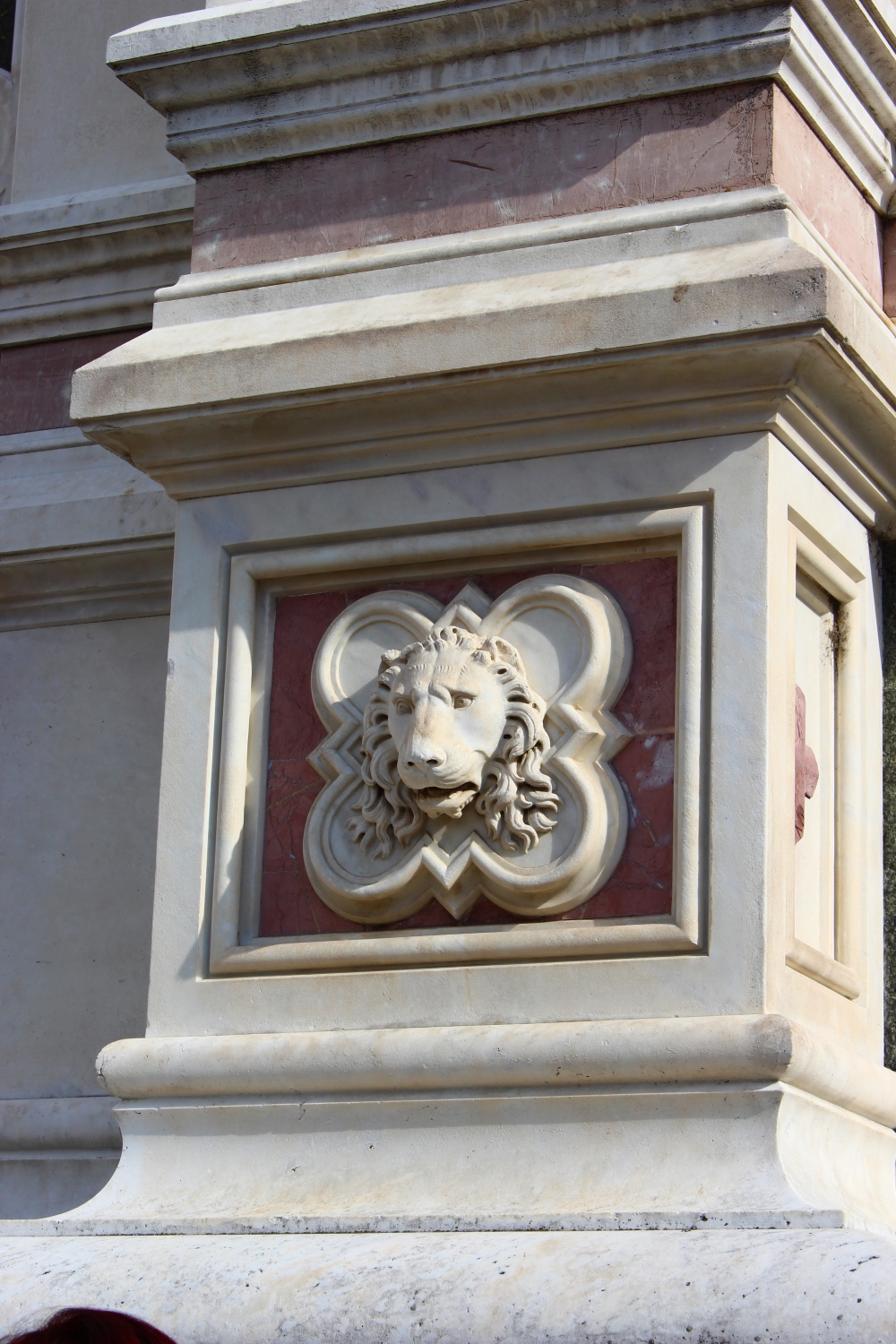


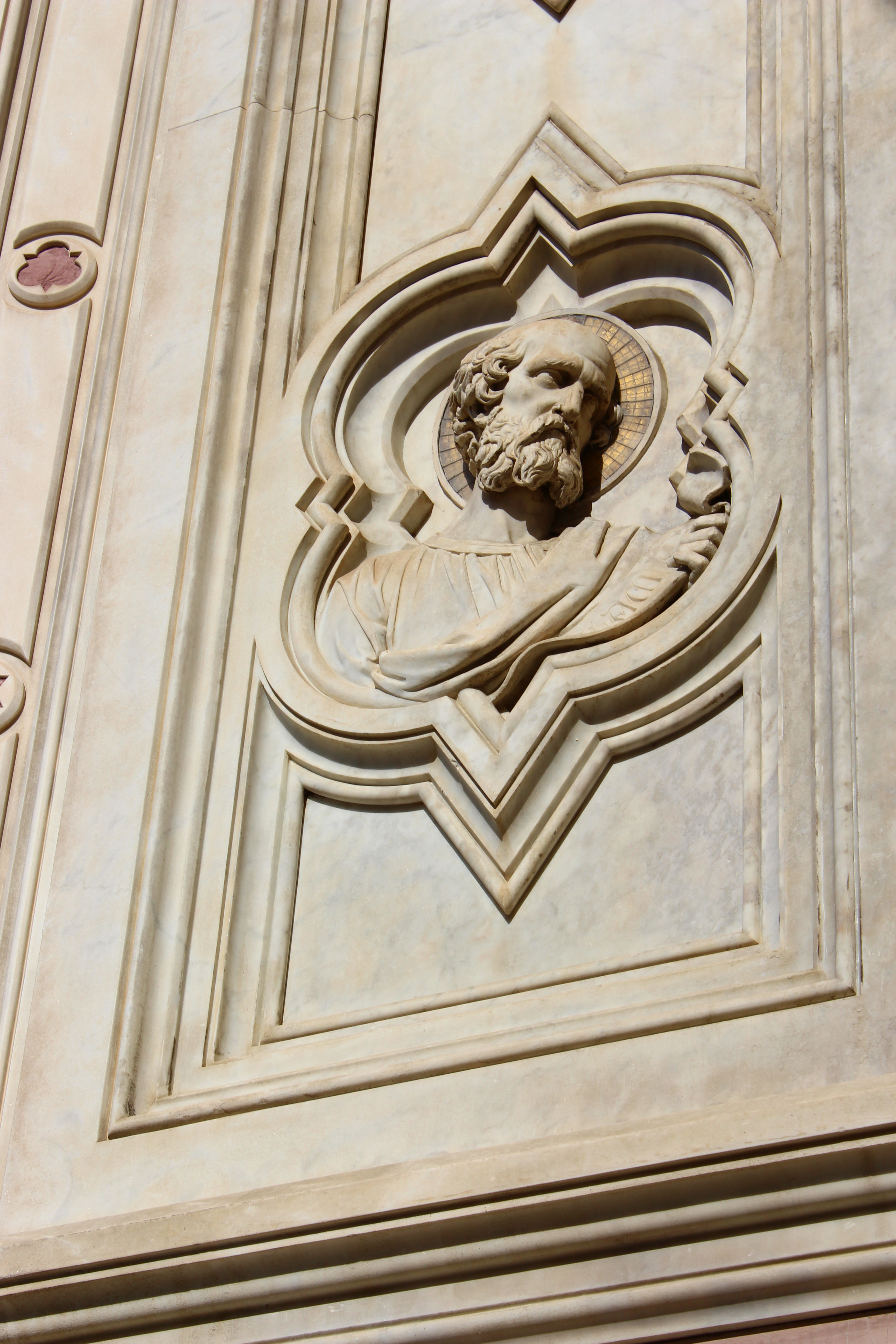
So there we are. That was all done in a day. I believe we walked about 30,000 steps that day. We did very little the next. Florence is one of the places I feel I need to get back to, to find all the little more unknown gems it holds closely. There is just so, so much to see. You must be prepared to walk about three days worth of walking and to exhaust yourself with all there is to see.


